Technology
MRI machine: the magic of magnetism in the medical world
Published
3 months agoon


MRI machine: the magic of magnetism in the medical world
Maybe it has happened to you that for some reason you feel severe pain in your hand, for example, and after a few days of taking different painkillers, the pain has not subsided and you had to go to a specialist doctor for more basic treatment. In these cases, after the initial examination, the doctor usually suggests MRI imaging (Magnetic Resonance Imaging or MRI) for a more accurate diagnosis; An amazing device that is widely used today.
The MRI machine revolutionized the medical world and brought about many changes in diagnosis and treatment. Most people do not know how this device works and how it works has always been a strange mystery to them. To get to know the operation of the MRI machine, we must be familiar with the general principles of quantum physics, superconducting magnets, computer science, and related mathematics.
Years ago, methods such as X-rays and ultrasound (using high-frequency sound waves) were used to image the internal organs of the body. Although these two methods are still used for imaging in some cases, MRI provides detailed and three-dimensional images of the human body that cannot be compared with the images obtained from X-ray and ultrasound.
MRI has completely changed the way we view our bodies
Using MRI, we can detect benign or malignant tumors in the kidneys, brain, abdomen, and other parts of the body. In MRI imaging, doctors detect the blockage of the coronary arteries of the heart by injecting paramagnetic substances into the patient’s vein. This accurate diagnosis makes it possible to place a stent at the site of the blockage to open the blood vessels, improve blood flow and, as a result, save the patient’s life. MRI is a newer and more accurate method for diagnosing occluded heart vessels, which has many advantages such as non-invasiveness, greater accuracy, and higher safety than older methods.
What is the structure of the MRI machine?
As you can see in the image below, the MRI machine consists of different layers. Each of these layers represents different magnets that we use for imaging.
 3D model of MRI machine
3D model of MRI machine
If we look at the MRI machine from the front, the patient is placed horizontally inside it as shown in the picture.
 The patient inside the MRI machine
The patient inside the MRI machine
The difference between the MRI machine and other imaging devices such as X-ray or ultrasound is that the signal used to create the image in the MRI comes from inside the patient’s body, so for accurate imaging, we need to know which part of the body the signal sent came from. To do this, we use the Cartesian coordinate axes or the x, y, and z axes and divide the image along three axes.

The z component, which is placed along the patient’s body, and its direction is from head to foot, is used for axial imaging. In this type of imaging, a wide range of organs and body structures such as the brain, spine, abdomen, chest, and pelvis are examined. Also, the y component provides coronal images. These images examine the anatomy of the body from the front to back or back to front view. Finally, the x component is used to prepare sagittal images. This plane divides the body into left and right parts. It goes without saying that the z-axis is the longitudinal axis (longitudinal plane) and the xy plane, which is perpendicular to the z-axis, is called the transverse plane.

In MRI imaging, a concept called “nuclear magnetic resonance” (Nuclear Magnetic Resonance or NMR) is used, and by applying a very large magnetic field, we induce resonance in certain atoms inside the patient’s body. If you are wondering what atom is used for this, the answer is hydrogen atom, because there are a lot of atoms in question in the human body and its spin is also opposite to zero.
As you know, about 75% of the human body is water and each water molecule consists of two hydrogen atoms and one oxygen atom. Hydrogen and oxygen atoms are connected to each other through polar covalent bonds and electron sharing, But this sharing is not done equally.
Due to its greater electronegativity, the oxygen atom is more attractive to electrons, and for this reason, it pulls the electron cloud towards itself. This asymmetry in the distribution of electrons causes polarity in the water molecule. Oxygen atoms, due to having a negative partial charge, and hydrogen atoms, due to having a positive partial charge, form the two poles of the water molecule.
In MRI imaging, we use positive hydrogen atoms inside the body
The signal captured for MRI imaging comes from the positive hydrogen nuclei in water and fat. The positive hydrogen nucleus, like other subatomic particles, has a spin that gives it a magnetic moment. In simpler terms, we can replace each hydrogen nucleus with a small magnetic magnet.
We can think of the patient as a box full of hydrogen atoms that exist completely randomly in the absence of a magnetic field, moving around in no particular direction. The speed of movement of hydrogen atoms depends on the temperature of a person’s body, that is, the higher the temperature of a person, the faster the speed of movement of atoms, and the lower the temperature of a person’s body, the speed of movement of atoms is lower. These atoms are affected by the external magnetic field due to having a magnetic moment. This state is similar to the position of the compass needle in the direction of the earth’s magnetic field; Therefore, by applying an external magnetic field, the hydrogen nuclei are placed in a certain direction.
 A positive hydrogen nucleus that can be replaced by a magnet.
A positive hydrogen nucleus that can be replaced by a magnet.
The MRI machine consists of a main magnet, gradient coils (these coils play an important role in creating the spatial magnetic field), radio signal (RF) coils, and a computer system. In general, we can think of MRI as a large magnet that creates a magnetic field called B0.
Typically, the B0 value in MRI machines is between 1.5 and 3 Tesla (about 300,000 times stronger than the Earth’s magnetic field and 30,000 times stronger than the magnetic field on a refrigerator magnet). Most of the hydrogen nuclei are placed in the direction of the magnetic field after being placed in it, but the direction of some nuclei is also opposite to the direction of the external magnetic field. From the point of view of quantum physics, hydrogen atoms exist in both states, but the important point in this section is that the number of hydrogen atoms that are in the direction of the B0 magnetic field is greater than the number that is in the opposite direction.
We subtract the field resulting from the nuclei placed in the direction of the magnetic field B0 from the total field of the nuclei placed against the direction of the B0 field and call it Bnet. If we consider the z-axis of the human body placed in the MRI machine, the Bnet will be aligned with the z-axis as shown in the image below. As you can see, the B0 and Bnet fields are parallel to each other and in the positive direction of the z-axis. Note that the magnet is in a low energy state when aligned with the magnetic field. To put it more simply, small magnets tend to align with the z-axis when placed in the magnetic field B0.

Positive hydrogens, in addition to being in the direction of the magnetic field of the MRI machine, rotate around their central axis like a spinning top. This movement is called nuclear spin and the speed or frequency of this rotational movement depends on the magnitude of the magnetic field B0. The bigger the B0 field is, the higher the frequency of the forward movement of the hydrogen atom will be. In MRI imaging, we should not look at hydrogen atoms individually, but we should pay attention to the total magnetization vector created by them and the change of this vector due to the change of magnetic fields in the MRI machine. Therefore, we replace the hydrogen atoms with the total magnetization vector (Bnet) along the z-axis.
The total magnetization vector is the quantity we want to measure in MRI imaging, but it is not possible to measure this vector along the z-axis and parallel to the B0 field, why? Because the B0 field is large enough to affect the measurement of its magnetization vector. How do we measure the total magnetization vector? To do this, we place this vector perpendicular to B0 and measure it. How do we place its magnetization vector perpendicular to the main magnetic field? We can do this with the help of the second magnetic field called radio frequency pulse (RF).
To measure the magnetization vector of hydrogen atoms, we must place them perpendicular to the main magnetic field.
Positive hydrogens located in the direction of the magnetic field can be affected by RF signal radiation. This signal is a smaller variable magnetic field perpendicular to the main magnetic field applied at a certain frequency.
An RF signal is not really a radio wave, but electromagnetic energy with a frequency in the radio wave spectrum. The RF pulse changes at a frequency equal to the frequency of the forward motion of the hydrogen atoms. When the frequency of the forward movement of hydrogen atoms and the frequency of the RF pulse become equal, two things happen. After entering this signal, the positive hydrogens are directed to another plane (the plane perpendicular to the B0 field) and rotate around their axis at the same time and in phase with each other. The rotation angle from the z-axis depends on the magnitude and duration of the RF signal radiation.
As the positive hydrogens or protons go to the plane perpendicular to B0, the longitudinal magnetization will change. In general, most protons are placed in the direction of the B0 field; But by giving them some energy, the protons can be aligned perpendicular to B0. This is not the whole story; By energizing the protons in the form of an RF pulse, they begin to move forward simultaneously with each other and in phase. As a result of this energy, the magnetic moment of protons (hydrogen atoms) is transferred to a plane perpendicular to the main magnetic field B0 or xy plane.
Therefore, the RF pulse does two things:
- transfers the total magnetic field to the xy plane;
- Hydrogen nuclei move forward in phase with a specific frequency and rotate around it like a spinning wheel with a specific angle to the central axis. As a result, the total magnetic field moves in the xy plane and perpendicular to the z-axis.
So far we have understood that in the MRI machine, unlike other imaging machines, protons inside the patient’s body are used to take the image. These protons are hydrogen atoms with a partial positive charge, which after being placed in the direction of the main magnetic field B0, are placed in the same direction and parallel to it (in the direction of the z-axis). Next, by applying a smaller field called the RF pulse, the protons are aligned perpendicular to the z-axis and in the xy plane; Then we place a small coil in the MRI machine. According to Faraday’s principle of induction, changing the magnetic field induces an electric current.
According to the Faraday induction principle, whenever the magnetic flux passing through the coil changes at a certain rate, a voltage of a certain value is induced in the coil. The amount of induced voltage depends on the speed of change of magnetic flux, the number of turns of the coil, and the area of each turn. If the coil is in a closed circuit, the induced voltage can induce a current in the coil, the amount of which depends on the resistance of the circuit and the amount of the induced voltage. In the MRI machine, the current induced in the coil is used to create the image.
As we said, the total magnetic field (total magnetization vector) moves in the xy plane and perpendicular to the z-axis. According to the movement of the magnetization vector in the XY plane, we can measure a signal. This vector moves in the xy plane due to the RF pulse. The important point is that the frequency of the RF pulse must be equal to the frequency of the forward movement of hydrogen atoms. As the frequencies become equal, magnetic resonance occurs.
To better understand the concept of resonance, let’s examine a simple example together. We have a game device called “trampoline” which is made of thick fabric and on which acrobatic movements can be performed. Let’s say you and your friend are jumping up and down on a trampoline. If you jump on a trampoline alone, you will go up to a certain height, h. Now, if your friend jumps at the same time as you, the height of your jump will be greater than h. In other words, synchronizing your jump with your friend will increase your jump height. Note that the height of the jump will increase if you jump at the same time as other people.

For hydrogen atoms, when the RF pulse is irradiated, a state similar to jumping on a trampoline occurs. Only when the frequency of the forward movement of hydrogen atoms and the frequency of the RF pulse are equal to each other, the hydrogen atoms move in phase and the angle of magnetization starts to change. As we mentioned, angle changes depend on RF pulse duration and amplitude. After transferring the total field or the total magnetization vector to the xy plane and creating the necessary signal, we cut off the RF pulse radiation. The received signal is created due to the progressive movement of the magnetization vector with a frequency equal to the frequency of the RF pulse. At first glance, the generated signal looks like the image below; But in practice, the generated signal is not like this, because the RF pulse radiation is not continuous and after a certain period of time, it is interrupted.

What happens in practice is that the hydrogen atoms move in phase with the frequency of the RF pulse, and after it is interrupted, they move out of phase. In this case, the magnetization vector in the xy plane and as a result, the generated signal, become smaller and smaller. The orange graph plotted on the signal is called the free-induced attenuation curve or T2.
It is important to note that each tissue in the body has a unique *T2 diagram and is different from other tissues. The free-induced damping plot of water is very slow with respect to time, whereas the free-induced damping plot of bone or tissue is very fast with respect to time. You might ask yourself what it means if this chart is slow or fast compared to time; The graph of fast damping with respect to time means that the amplitude decreases rapidly with respect to time; But in the slow damping diagram, the amplitude decreases slowly and very slowly with respect to time. By using these differences, we can create the necessary contrast in the captured images.

The above process occurs simultaneously with another independent process. At the same time as the magnetization decreases in the xy plane, the longitudinal magnetization increases along the z-axis. The decrease of magnetization in the xy or *T2 plane occurs much faster than the increase of magnetization along the z-axis. As you can see in the diagram below, over time the magnetization increases along the z axis. Finally, there comes a time when the hydrogen atoms are completely out of phase and the magnetization in the xy plane becomes zero. In this case, the magnetization vector has no component in the xy plane and has only one component along the z-axis. Note that the time that the magnetization is completely aligned with the z-axis (T1) is much larger than *T2.

Note again that these two processes occur completely independently of each other; That is, by knowing the T2 for a specific tissue in the body, we cannot easily obtain the T1 of that tissue, because these two quantities are completely independent of each other. Don’t forget that we can only measure the signal perpendicular to the main magnetic field, B0; Therefore, to measure its magnetization, we must make it perpendicular to B0.
Now we have reached the stage where we can do MRI imaging. To do this we need two separate parameters that use the differences of T2 and T1; These two parameters are called “Time of Echo” (TE) and “Time of Repetition” (TR). Consider two separate tissues in the body, each of which has protons aligned along the z-axis. Now we irradiate the RF pulse to two tissues. Protons inside each of the tissues perform forward movement in the plane perpendicular to the main field B0. Further, with hydrogen atoms being out of phase, the magnetization in the xy plane decreases in the time *T2.
The time interval between the applied radio pulse to excite the hydrogen atoms and the measurement of the signal resulting from their spin is called the echo time. In other words, TE represents the time it takes for the MRI signal to be measured after the initial excitation. By giving more time, the phase inhomogeneity and the difference between the two tissues increases. At the same time, two textures acquire longitudinal magnetization or magnetization along the z axis with different tunes. Finally, the magnetization vector of two tissues is placed along the z-axis. By irradiating the second RF pulse, we can once again place the protons of the two tissues in the xy plane. The time between the first RF pulse and the second RF pulse is called the repetition time or TR.
By irradiating the RF pulse, interrupting it, and re-irradiating it, we can image different parts of the internal body.
TE is measured in milliseconds and plays an important role in adjusting MRI image contrast. We said earlier that the amount of *T2 in different tissues and as a result, the reception of the MRI signal is also different in them; Therefore, by adjusting TE, it is possible to influence the received signals from different tissues and increase the contrast between them.
Let’s clarify the role of TR and TE times in MRI imaging with a simple example. Suppose you are at a party and you want to meet and talk to different people. TE time is the same as how long you wait for each person to speak. If the TE is short, you will only hear the beginning of each person’s words, but if it is long and long, you will hear the person’s words more fully and in more detail. Now you stop talking to the person in question and talk to him again after a while, the time between the first and second conversations is the same as TR. Different body tissues are like different people at a party; Just as each person has a different tone of voice, each tissue produces a distinct signal that competes with the signals produced by other tissues.
By adjusting TE and TR, we can obtain different information from tissues. Suppose we want to image the brain, if the TE is short, we have a general image of the brain, but if the TE is long, the obtained image of the brain shows more details. Or suppose we want to take a picture of a tumor inside the patient’s body. A short TR tells us how active the tumor is, but a long TR gives us information about tumor growth and invasion of surrounding tissues.
We said that the tissues give us different signals, the reason for this is due to the different accumulation of water and fat in different tissues. Atoms in fat have intrinsic properties and repulsive interactions compared to hydrogen atoms in water. This difference allows MRI technicians to create different contrasts between different body tissues. By adjusting the T1 and *T2, TE, and TR times, we can prepare different images of different parts of the body.
Read More: A century after the advent of flying cars; Why are we still on earth?
How is the main magnetic field created in MRI?
In the previous section, we said that we can consider the MRI machine as a big magnet; But the main question is how to create a magnetic field with a magnitude of 1.5 to 3 tesla in MRI. By increasing the B0 magnetic field, the received signals from different tissues are amplified, as a result, the obtained image will be of better quality. The MRI machine can create a magnetic field of up to 20 tesla. Do not forget that reaching this amount was not easily achieved.
Early MRIs used permanent magnets to create a magnetic field, but these magnets could only create a magnetic field up to 0.5 tesla; Therefore, the created images did not have an interesting quality. Next, researchers used electromagnets instead of permanent magnets to achieve a stronger magnetic field; But electromagnets cannot create a magnetic field as large as 1.5 Tesla; Because large magnetic fields require high currents that melt ordinary wires.
To solve this problem and have high currents, researchers used superconducting coils. Temperature affects conductive materials so that their resistance decreases as the temperature decreases. But superconductors have a unique feature; Their resistance becomes zero at a temperature close to -273 degrees Celsius or absolute zero. In this case, the electric current in a loop made of superconducting material can flow forever. In reality, the superconducting coil in the MRI machine does not directly require any external electrical power; Rather, the coils only need to be kept cool by spending some energy, in which case the MRI magnet will stay on permanently.
The energy required to operate the MRI machine for a year is about 130,000 to 140,000 kilowatt hours. Niobium-titanium is one of the most common superconducting materials in MRI, in such a way that 80% of niobium-titanium extracted from the earth is used to make MRI devices. As we said, superconductivity occurs at a very low temperature, so we need a very advanced cooling system to reach this temperature.
When engineers built early MRI machines, they kept superconducting wires inside a liquid helium bath at -269 degrees Celsius; But the problem with doing this was that helium evaporates quickly, so it was necessary to constantly refill the container containing liquid helium, which cost about $26,000 a year. To solve this problem, the researchers equipped the MRI machine with a vacuum chamber and placed liquid helium inside it.
MRI imaging, as a tool for accurate diagnosis of various diseases, opens a window to a bright future in the field of medicine. With the ever-increasing advances in this technology, we can hope that in the near future we will see new and non-invasive treatment methods that use MRI to treat diseases and save human lives accurately and purposefully


You may like
-




What is Kali Linux? Everything you need to know about this popular but mysterious distribution
-




Sony Brand Story; From the production of rice cookers to becoming one of the most famous companies in the world
-




How did the people of the past imagine the future?
-




The story of the Yahoo brand, the story of the fall of a unicorn startup
-

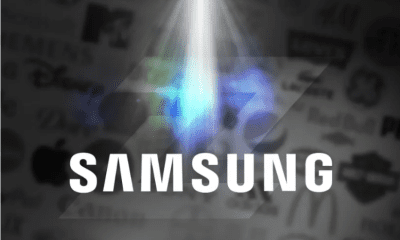


Samsung brand story; Full-view mirror of Korea’s commercial history
-




How to recognize the name of the font from its picture?
Technology
What is Kali Linux? Everything you need to know about this popular but mysterious distribution
Published
1 day agoon
15/09/2024

What is Kali Linux? Everything you need to know about this popular but mysterious distribution
In today’s technology era, as devices and tools become more advanced, their negative and destructive side also become more complex, and as a result, interaction with them requires more care. Currently, with the pervasiveness of the Internet the strong dependence of our daily lives on it, and the emergence of artificial intelligence, cyber threats have also increasingly spread, and the news of hacking various platforms is heard from left and right.
Considering the cyberization of part of people’s lives (entertainment, chat, and earning), the importance of strong cyber security measures cannot be ignored. Kali Linux or in English Kali Linux is a powerful and open-source Linux distribution that is specifically used for penetration testing and digital research and is considered one of the most important tools in the field of cyber security.
 Kali Linux 2024.3
Kali Linux 2024.3
Every techie has probably thought of installing Kali Linux, even via a virtual machine, to poke around and entertain their inner little scientist.
When users first encounter Kali tools, they see strange names such as BeFF Bettercap Hashcat Metasploit, or Nmap, which are almost difficult to guess their use from the name. Overall, Kali is a powerful distribution, and working with it requires a deep understanding of its tools.
What is Kali Linux?
Kali Linux, formerly known as BackTrack Linux, is a Debian-based Linux distribution developed by Offsec. This Linux distribution hosts hundreds of different tools used for penetration testing, reverse engineering, and vulnerability detection of networks and websites.

Due to the fact that Kali is developed based on Debian, it has high stability and security, and its Debian base allows it to benefit from vast software repositories and a similar package management system. In addition, if you are in the category of users who are already familiar with Debian Linux distributions such as Ubuntu, navigating Kali will not be difficult for you; But for users of other operating systems to enter the world of Linux, learning Kali takes more time.
Another important goal of Kali developers is to give the user unlimited freedom to have an open-source and ever-evolving platform and not just be limited to the tools available on the platform. Thus, even the most detailed parts of the software on Kali are open to optimization by the user.
Who uses Kali?
If you are imagining a sequence of Mr. You’re Robot, which depicts a hall full of professional hackers, and the hackers are sitting behind their systems in hoodies, you’re completely wrong. The use of Kali Linux does not require special clothing and there are professional and skilled experts who appear in their company and workplace every day and are responsible for simulating attacks on the network and discovering and fixing its vulnerabilities.
Other people for whom the use of Kali Linux is useful are instructors who plan to train the next generation of white hat hackers and ethical hackers, and Kali Linux is considered the best toolbox for training.
Key features of Kali Linux
Kali Linux has a variety of tools in various categories, including intelligence gathering tools, vulnerability analysis tools, wireless attacks, password mining, and social engineering tools. Do not forget that one of the main foundations of hacking and penetration is social engineering.
 Kali Linux tools menu
Kali Linux tools menu
In Kali Linux, you can use Nmap to scan a network and identify its open ports, Metasploit tool is also provided to exploit a vulnerability, and Wireshark should be used to go deep into the traffic of a network.
Tools like Wifite and Airgeddon are also pre-installed on the Kali platform to check the security of your Wi-Fi network. In fact, Wifite automates the process of cracking WiFi passwords, while Airgeddon provides a convenient environment for assessing wireless network security.
Regardless of the tools and programs that are available by default on the platform immediately after installation, users can install other programs they need by connecting to the Internet by learning how to install the program on Linux.
 Metasploit tool on Kali Linux
Metasploit tool on Kali Linux
The Kali developers have paid attention to every detail and even included a custom kernel kernel for packet injection, which plays a key role when working with Wi-Fi. In addition, all packages are signed with GNU Privacy Guard to assure the user about the security of the platform.
Features of Kali based on the introduction on the official website:
- It is free and will always be free.
- Git is open source.
- It conforms to the Filesystem Hierarchy Standard.
- It is compatible with a wide range of devices.
- It is developed in a safe environment.
- Supports multiple languages; Of course, the platform tools are in English.
- Compatible with ARMEL and ARMHF.
Why is Kali Linux not suitable for everyone?
Kali tools are very powerful and require the same amount of knowledge and experience to use them properly. For example, a normal user might want to scan his home Wi-Fi network and find possible vulnerabilities by installing Kali. But in this process, with Kali’s tools, he creates a problem that has serious consequences for him.
 Installing the program in Kali Linux through the terminal
Installing the program in Kali Linux through the terminal
Suppose you try to execute a script without sufficient knowledge and because Kali is connected to the Internet, this script affects the computer of a certain person or organization. Do not forget that Kali is not designed and optimized for the everyday use of ordinary people and common tasks such as web browsing, editing documents and watching movies.
Go to Ubuntu to satisfy your curiosity and experience the Linux environment
If you are just curious about working with Linux and getting to know the environment of Linux distributions, better options can be found compared to Kali. Usually, the most recommended migration from other platforms to Linux ends up with the Ubuntu distribution, which has a user-friendly interface and a huge support community and runs everyday processes like any other operating system.
Linux Mint is another option recommended for beginners, especially for users who are used to traditional desktops. On the other hand, Windows users usually associate more with Zorin OS. These distributions are all developed for everyday use and perform tasks such as web browsing, editing documents and even running games very well.
Getting started with Kali
Finally, if you decide to install Kali Linux, you should download it from the official Kali website. On the Kali website, you can see different versions of Kali for installation in different ways, and according to your conditions and desired installation method, you can download the desired version.
To install Linux distributions, it should be noted that it is possible to install Linux on Flash or that the user can install the desired distribution on the virtual machine. Installing Kali on a virtual machine has the advantage that all events are kept in isolation and no damage is done to the user’s main operating system.
The Kali Linux distribution is considered the most popular platform for hackers and is designed for specific purposes where everyday use is not among its goals; Therefore, it is not necessary to install it for specialized work and of course to meet the needs of curiosity, but for normal use it is recommended to go for other distributions of Linux.
Dear Zomit users, what is your opinion about the user experience with Kali Linux? Do you recommend installing it?
fashion
Sony Brand Story; From the production of rice cookers to becoming one of the most famous companies in the world
Published
1 day agoon
15/09/2024

Noun: Someone who assists () a goal.
Sony brand story; From the production of rice cookers to becoming one of the most famous companies in the world
Sony is a Japanese multinational company headquartered in Minato, Tokyo. This company provides electrical services, gaming, entertainment, and financial services.
Sony is known as one of the pioneers in the production of electrical products and in recent years it has improved its position among the top companies in the world. Sony consists of many subsidiaries, the most famous of which are Sony Pictures, Sony Music, Sony Mobile, Sony Entertainment, and Financial Holding.
The story of the formation of the Sony brand
Masaru Ibuka returned to Tokyo from World War II in September 1945 to start a new job in the Japanese capital. He set up his workshop in an old, war-torn building with only eight employees. Their initial office walls were full of cracks and had no windows, but over time as their business progressed, the office building also improved.
In October of that year, Ibuka and his group launched a new company called Tokyo Tsushin Kogi, or Tokyo Institute of Communications Research. At that time, everyone was eager to work in the new company and wanted to use their engineering knowledge to rebuild Japan. However, no one knew where to start. Most of the employees were paid from Ibuka’s small savings and they had to work hard to survive.
The story of the formation of Sony goes back to 1945; When Masaru Ibuka returned from World War II
At that time and during the Second World War, people were thirsty to hear the news of the day. As a result, they came up with an interesting idea that changed the fate of the company forever. Most of the radios at that time were either destroyed by the war or could not receive radio waves due to police interference.
The Ibuka company repaired broken radios and also made it possible to receive waves using a series of converters. It didn’t take long for this model of radio to gain many fans among people.
Their business was in the center of attention and for this reason one of the Japanese newspapers published an article about them. This article not only got them more customers but also brought Ibuka’s old friend, Akio Morita, closer to him.
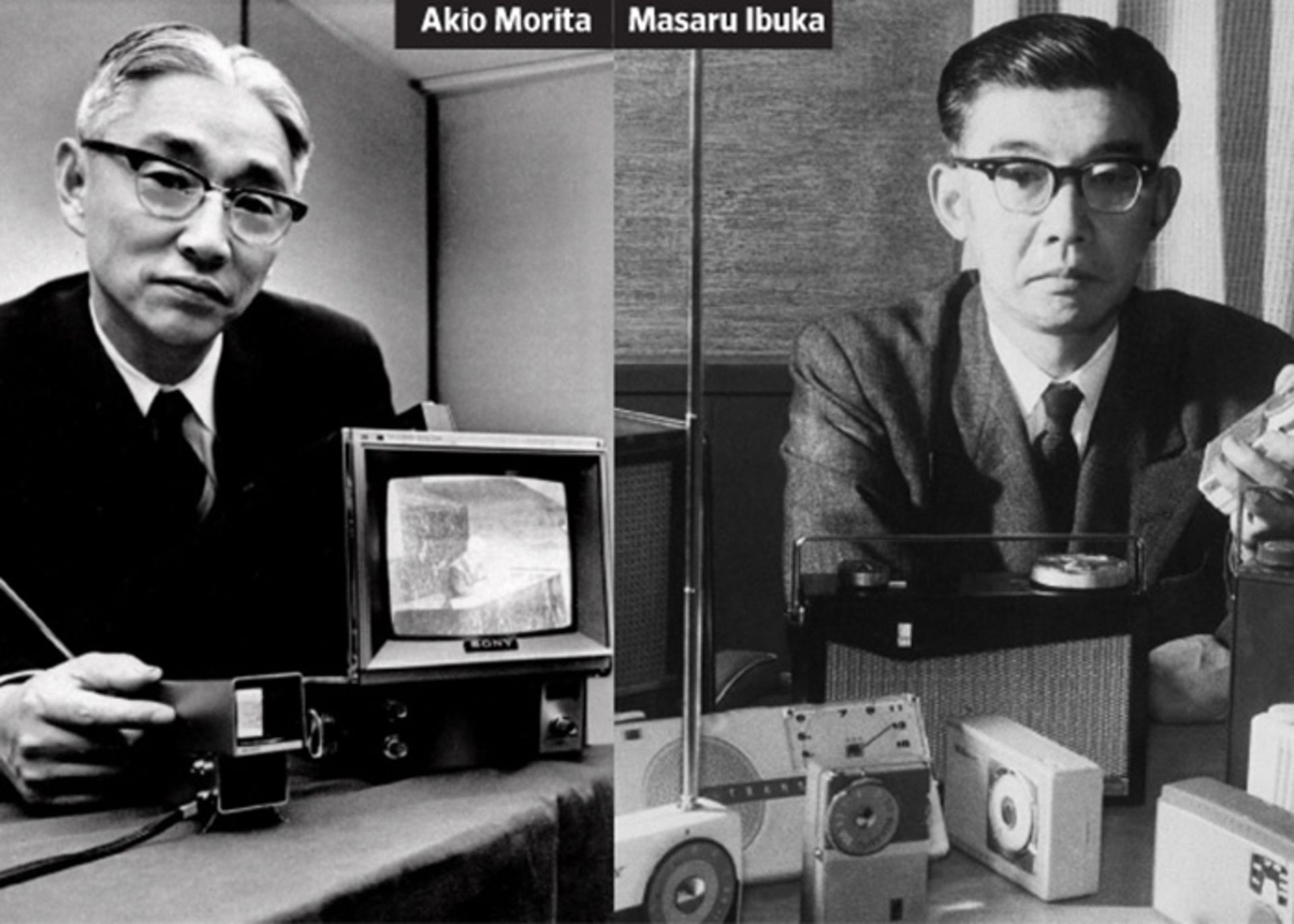
Ibuka and Morita, the founders of Sony Corporation, first met on a research committee studying new types of war weapons.
After some time passed, despite the big age difference, a deep friendship between Ibuka and Morita was formed. After the end of the war, Morita returned to his hometown and the communication between them was cut off. Until one day he read his friend’s name in a newspaper article and called Ibuka. Ibuka also asked him to get to Tokyo as soon as possible to start working with him again.
Sony’s brand name was originally supposed to be TTK or Totsuko
They were looking for a new name to advertise their company globally. Their intention was to choose the abbreviation of the company’s name, TTK, for advertising, but this name was already used. The word Totsuko was also another suggested name. But during his trip to America, Morita realized that it is difficult for Americans to pronounce this name.
They finally chose the name Sony from the combination of 2 words Sonus meaning sound and Sonny meaning young boy. Their purpose in choosing this name was to pronounce it in the same way in all languages of the world.
The company’s first product was a rice cooker, which, contrary to expectations, failed to meet expectations and failed. They did not get discouraged after their first failure and devoted more money to research. They focused on developing products that would benefit the Japanese people.
Sony; The first brand
During 77 years of operation, Sony has been able to launch the first product in many markets of the world. From Japan’s first tape recorder to Japan’s first transistor radio and other products.
Tape recorder

In 1950, the first Japanese tape recorder was made from its American model. This device was also not well received until Sony released a translated version of 999 Ways to Use the tape recorder.
After people became familiar with the product’s uses, the purchase request increased and the Sony tape recorder sold well. The demand for this product increased so much that the company had to expand its facilities to produce orders.
Transistor radio
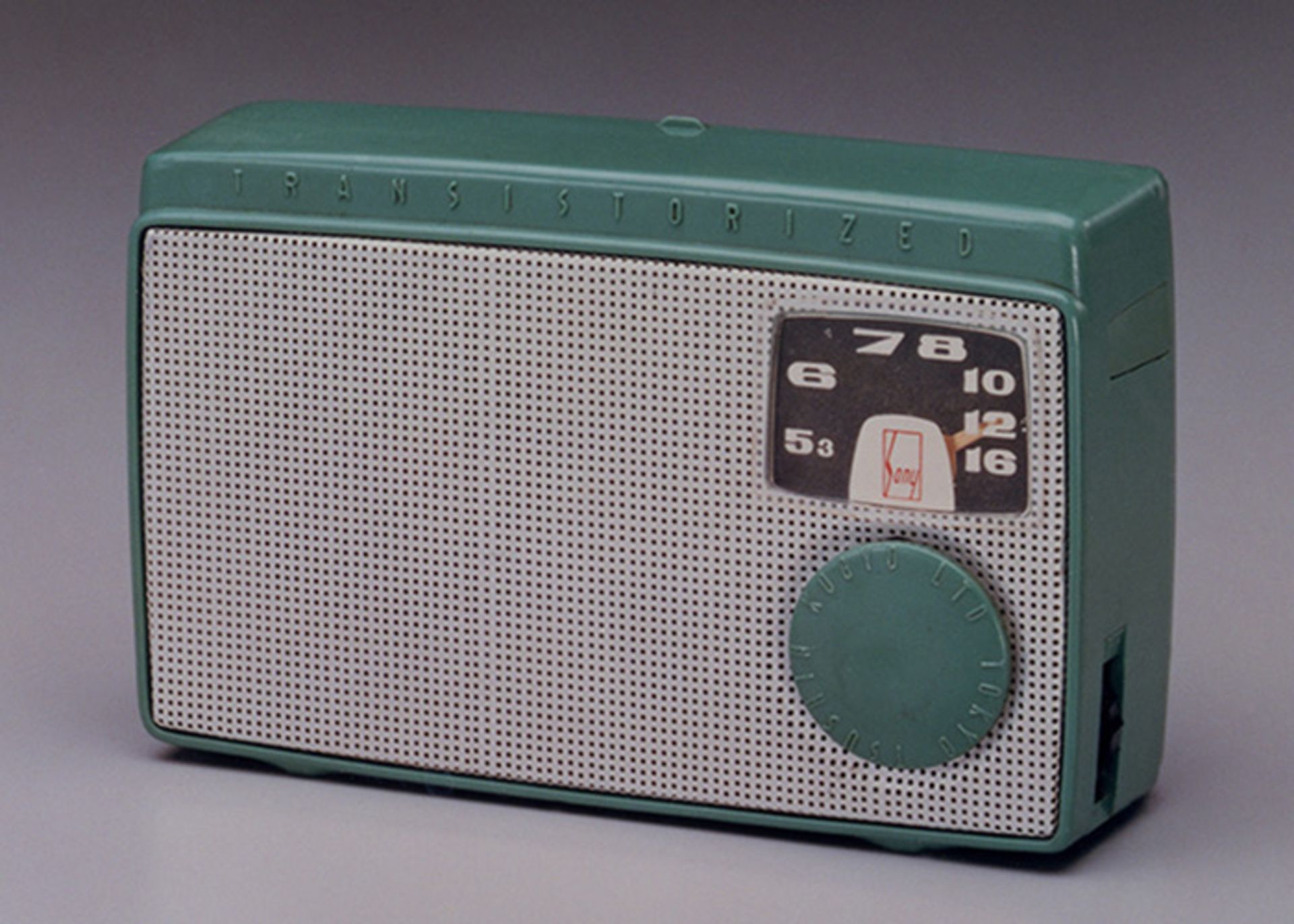
Japan’s first transistor radio was introduced in 1955 by Sony.
Portable TV
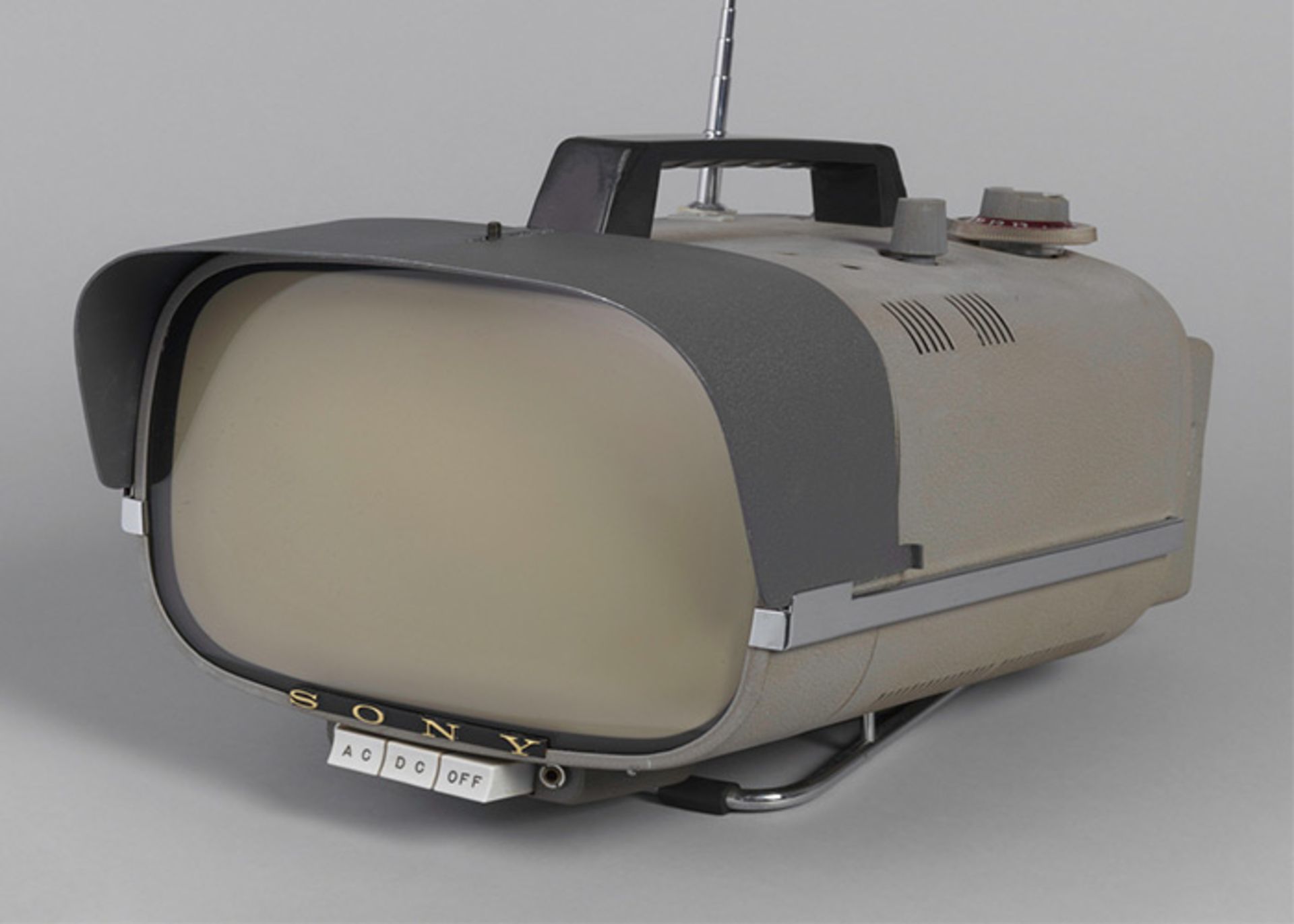
In 1960, Sony released the world’s first portable transistor TV. Sony used radio technology to produce this device.
The televisions of that time were big and in every house, a specific room was reserved for them. But these products brought a new definition of personal televisions to the market.
Video tape player
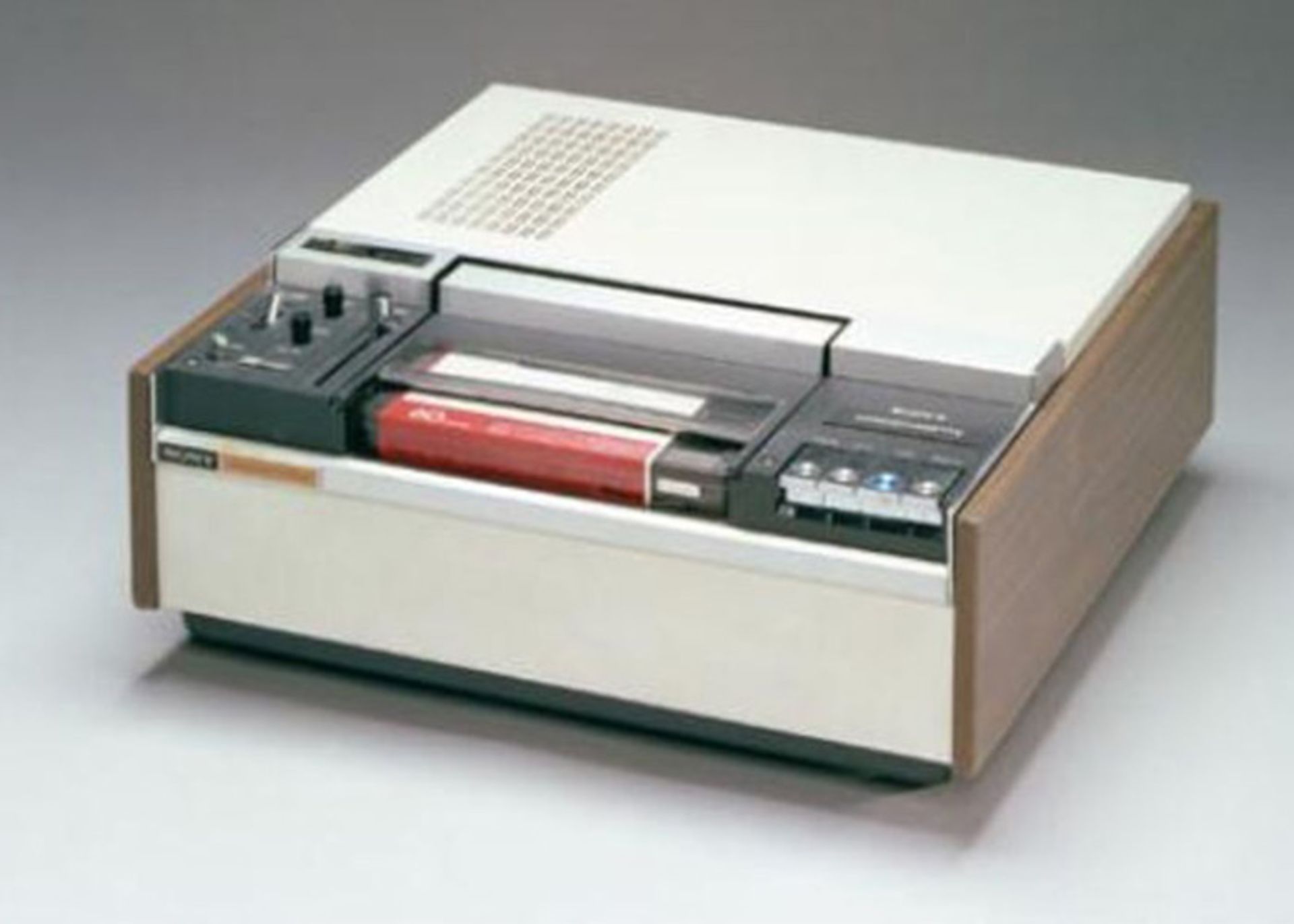
In 1971, Sony unveiled another product. This player was able to show videotapes in color inside the TV.
Masaru Ibuka retired in 1976 and was succeeded by Akio Morita as CEO.
The first generation Walkman

In 1979, Sony launched the first generation of Walkmans. These devices were portable and customers could listen to their favorite cassettes anywhere.
Many employees of the company believed that this device could not become popular among people without the ability to record sound. But contrary to their belief, this device introduced a new and successful lifestyle among people and achieved remarkable success.
The first CD player
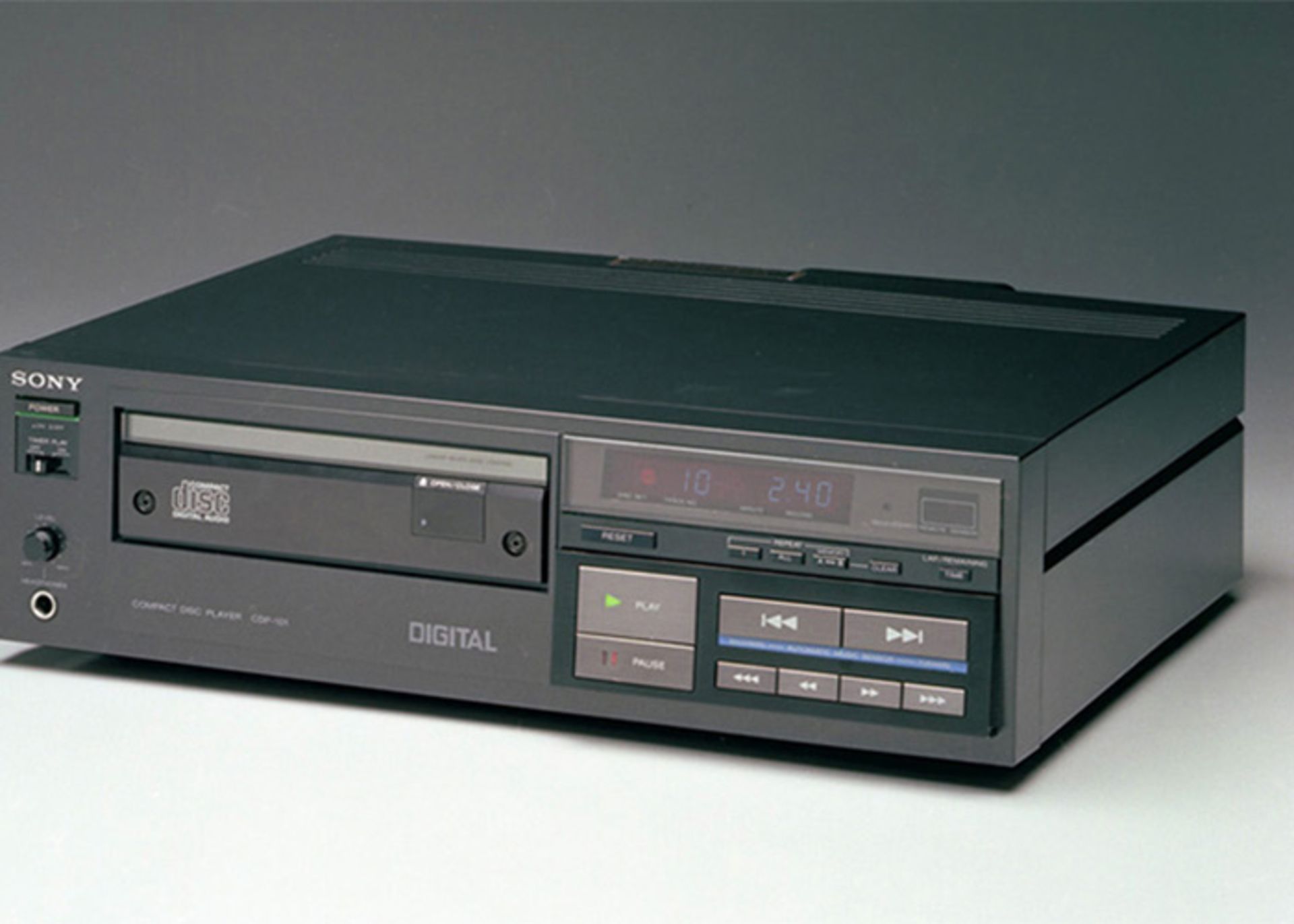
The world’s first CD player was launched in 1982 by Sony.
One of Sony’s senior managers, Norio Oga, was elected as the company’s CEO in 1989. Sony bought Columbia Pictures in the same year. This action was considered the biggest purchase of a Japanese company at that time.
PlayStation
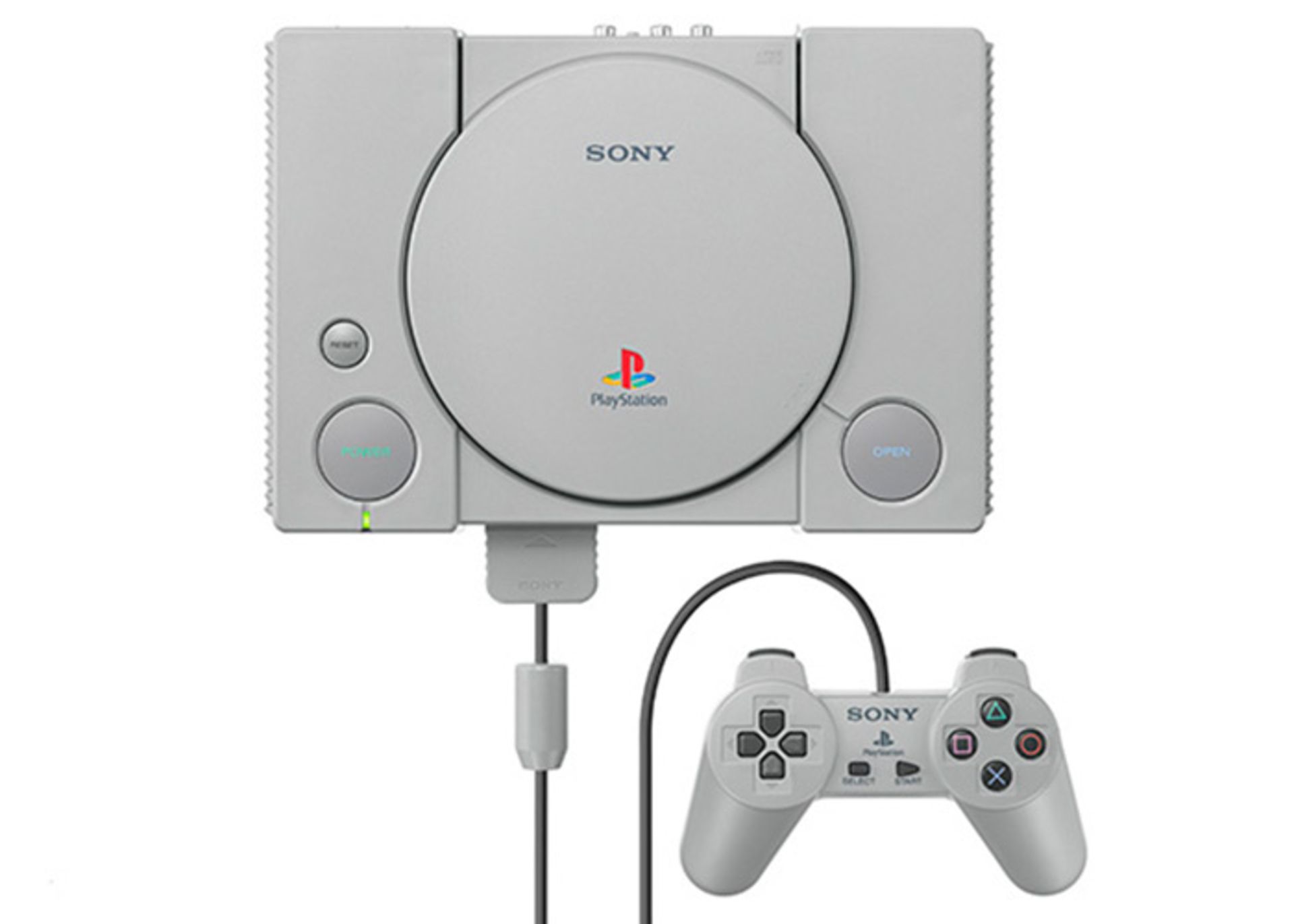
PlayStation is another important product of Sony. This product was sold in the Japanese market in 1994 and entered America and Europe in 1995.
PlayStation became so popular among people that its sales reached 10 million units by the end of 1996, and in 1998, about 50 million of this console had been sold. The production of new models of this product continues and today PlayStation 5 is considered the newest Sony console.
Digital camera
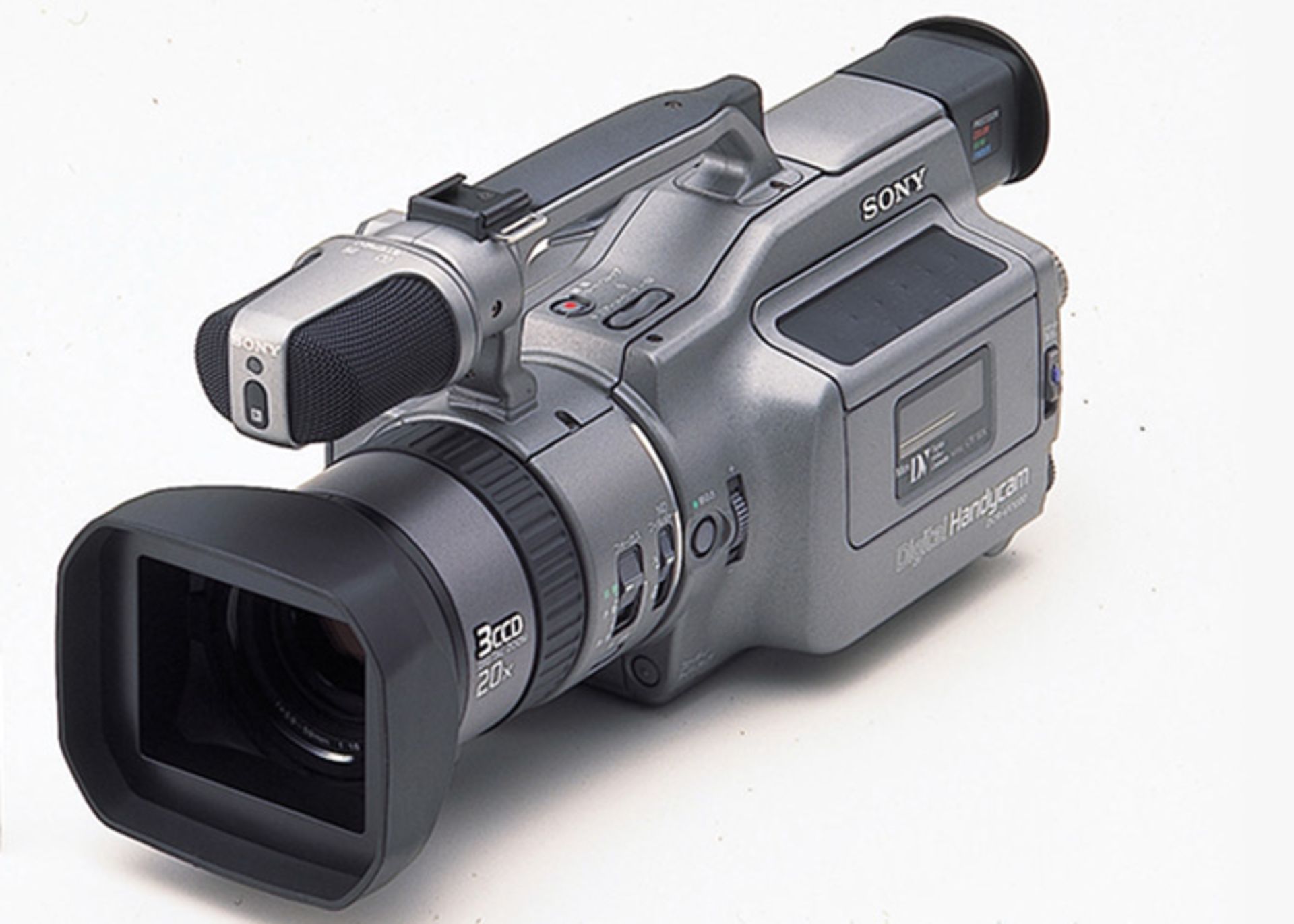
The first digital camera was launched by Sony in 1995. This device was very well built and recorded high-quality videos.
Sony Mobile
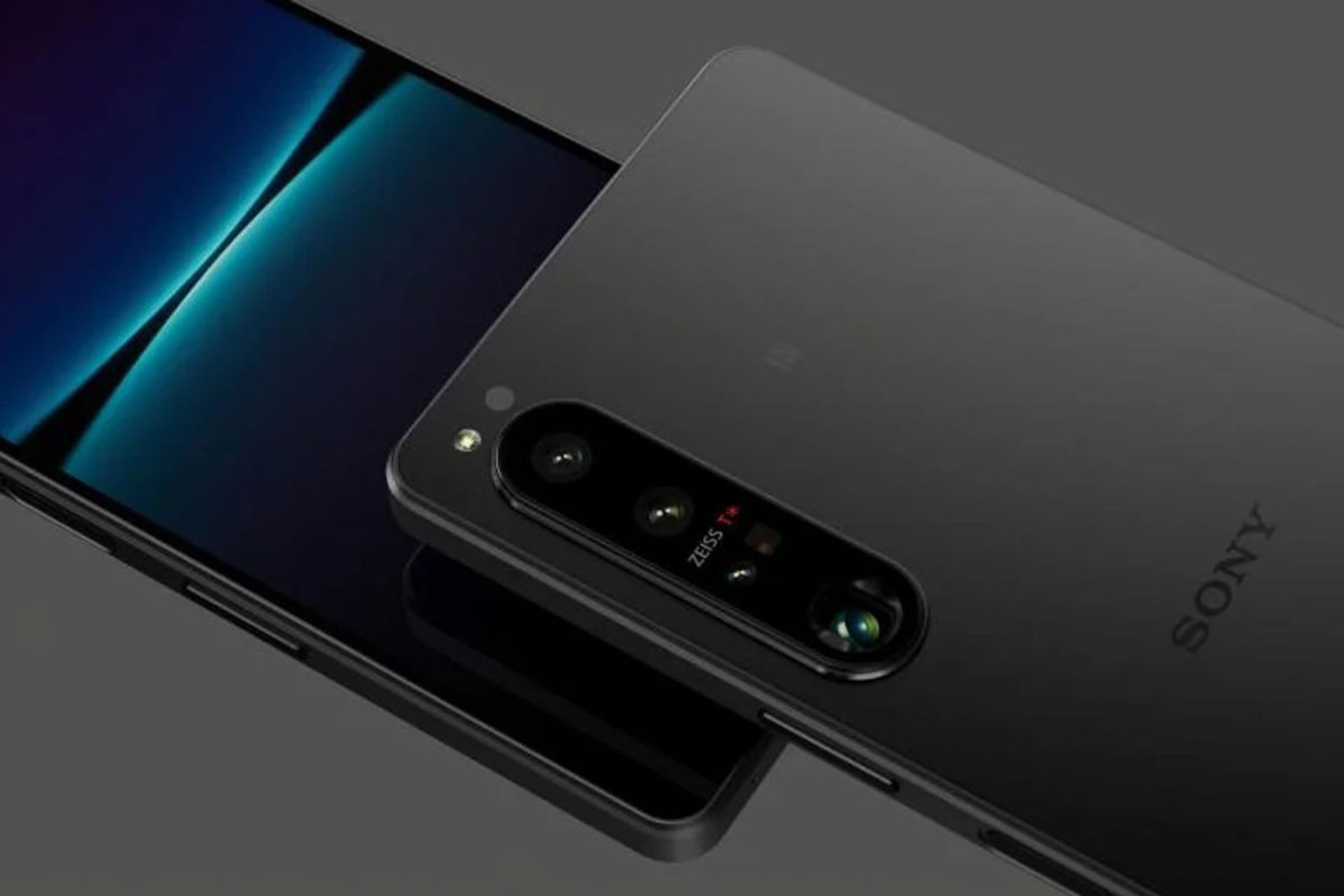
Sony Mobile Company started working in 2001 in cooperation with Ericsson. The company’s products were first marketed under the name of Sony Ericsson until Sony bought Ericsson’s shares in 2012. Since then, the phones of this company have entered the market under the name of Sony.
In 2012, Sony was able to win the title of the fourth mobile phone manufacturer. Xperia series mobile phones are the current flagships of this company. The Xperia brand doesn’t sell much at the moment, but Sony continues to produce products.
Vaio laptop

The first generation of Vaio laptops was launched in 1997. These laptops had a slim body and introduced a new concept of personal computers to the world.
Personal life of Masaru Ibuka

Masaru Ibuka was born on April 11, 1908 in Nikko, Japan. He graduated from the university in 1933 and worked in a film production company. Ibuka joined the Navy during World War II and was a member of the investigative committee; But after some time in 1945, he left the war to start his own radio repair workshop in Tokyo.
At that time, people followed the news of the world through the radio. As a result, starting a radio-related business was a good idea for a company. Ibuka and Akio founded Sony in 1946. Ibuka used transistors to make his company’s products. Therefore, Sony was introduced to the world as one of the first companies to use this technology for non-combat purposes.
Ibuka was a member of the Navy during World War II
In 1976, Ibuka was awarded an honorary doctorate from the University of Tokyo. He received two other honorary doctorate degrees in 1979 and 1994 from Tokyo and American universities.
Ibuka published a book titled “Kindergarten is Too Late” in 1971. In this book, he claimed that the most important time for human learning is from birth to three years old. As a result, he has suggested ways to teach skills to children at this time.
Ibuka was the leader of Sony until 1976 and then he retired; But even after that, he had a close relationship with company managers and guided them. He died in 1997 at the age of 89 due to heart failure.
Personal life of Akio Morita
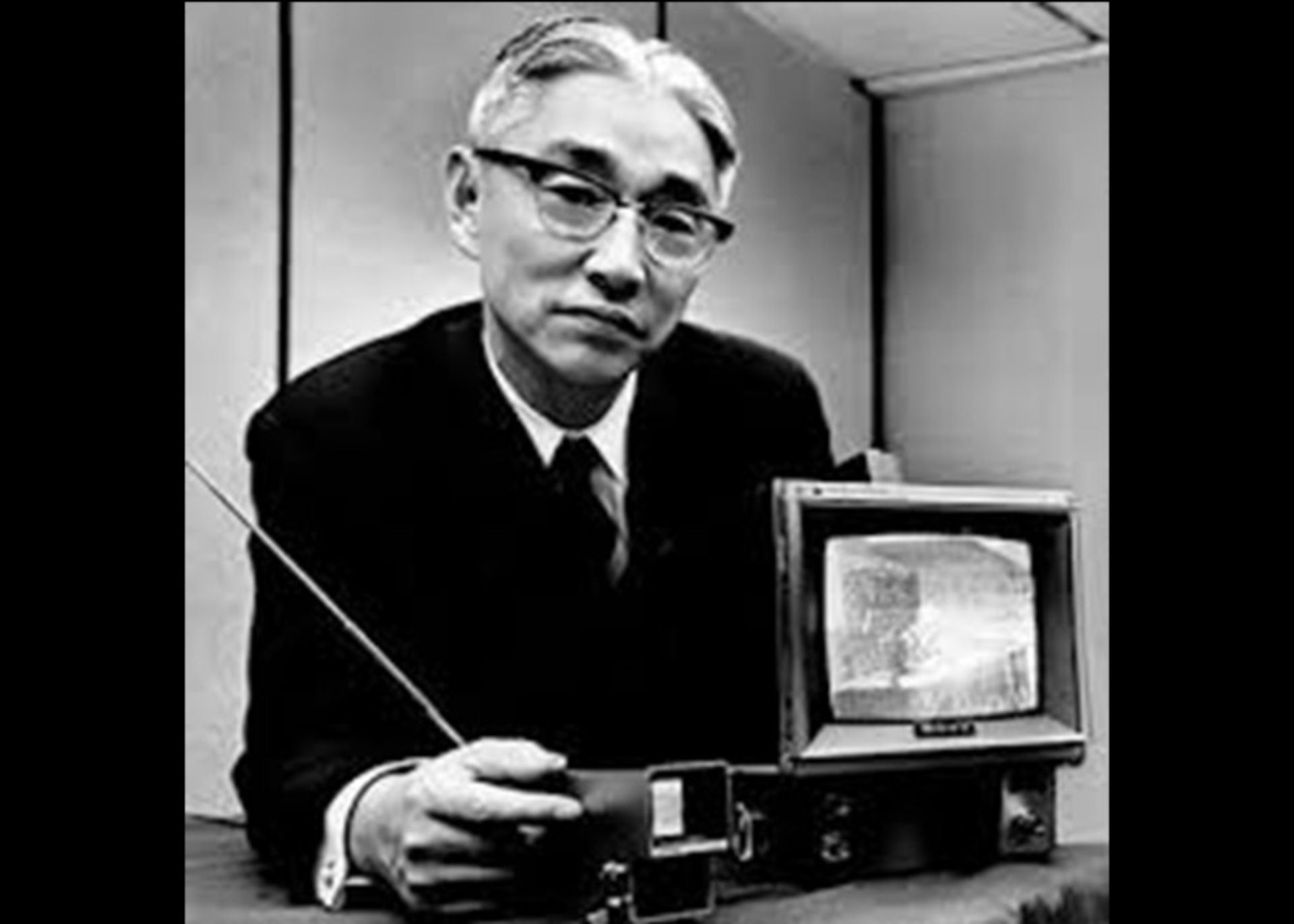
Akio Morita was born on January 26, 1921 in Japan. He was the eldest of his four siblings. As a result, his father trained him to manage the family business.
Akio was very interested in mathematics and physics and graduated from university with a degree in physics. During World War II, he became a member of the Japanese Army’s Research Committee, and while serving, met his future business partner, Masaru Ibuka.
Morita was a huge fan of all Sony products and worked hard to promote them. For example, the size of their first production radios was slightly larger than the standard shirt pocket size. Because they wanted to market their products as pocket radios, Morita made shirts for their employees with larger pockets to show customers that these radios were pocket radios.
Sony established its first branch in America in 1960. Sony was the first Japanese company to enter the US stock market. In 1994, Morita suffered a stroke while playing tennis and resigned from the chairmanship of Sony. He finally died of pneumonia in 1999 at the age of 78.
Sony failures

Since its establishment in 1964, Sony has produced successful and innovative products. Many of these products were entering the market for the first time, and as a result, they introduced a new concept of technology to the world; But no success story is without failures.
Sony Aibo

Sony robots were launched in 1999. These robots were in the form of cute dogs and had the power to learn. These robots could show emotions such as happiness, sadness, anger, surprise, fear and disinterest.
Sony robots were sold at a price of $2,500 and were very popular among their owners. But its high price prevented it from increasing its popularity and eventually, Sony stopped production.
Vaio music device
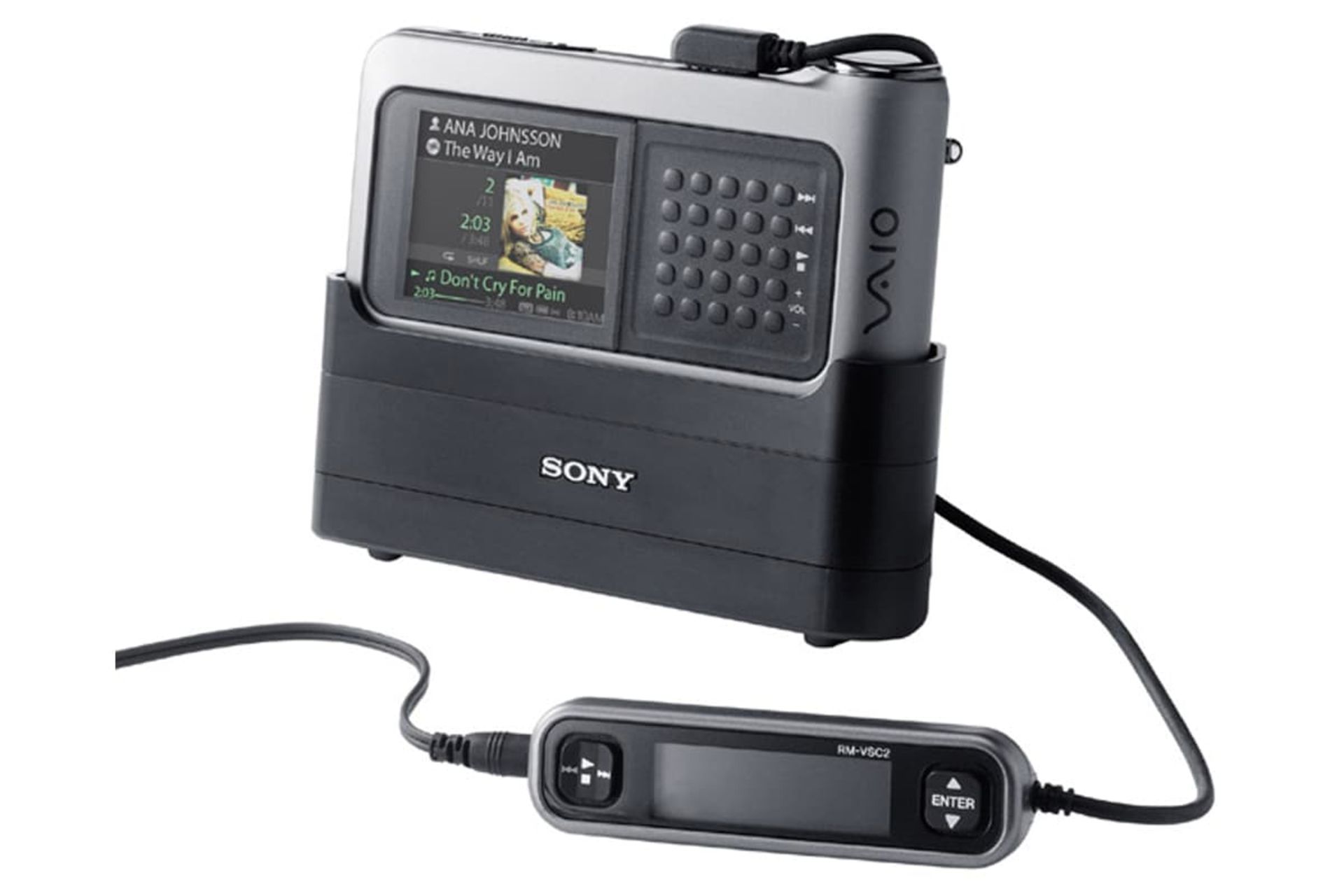
In 1979, Sony introduced a new concept of portability to the market by presenting its Walkman. The company had been Apple’s fierce competitor in digital music for two years, but its first product did not perform well.
The biggest mistake of the company was the dependence of files on the ATRACT format. Files with this format could only be used in Sony minidiscs. The ability to share files was the first word in digital music in 2000, and all files were released in MP3 format. As a result, this issue became a big challenge for Sony.
Sony e-Villa
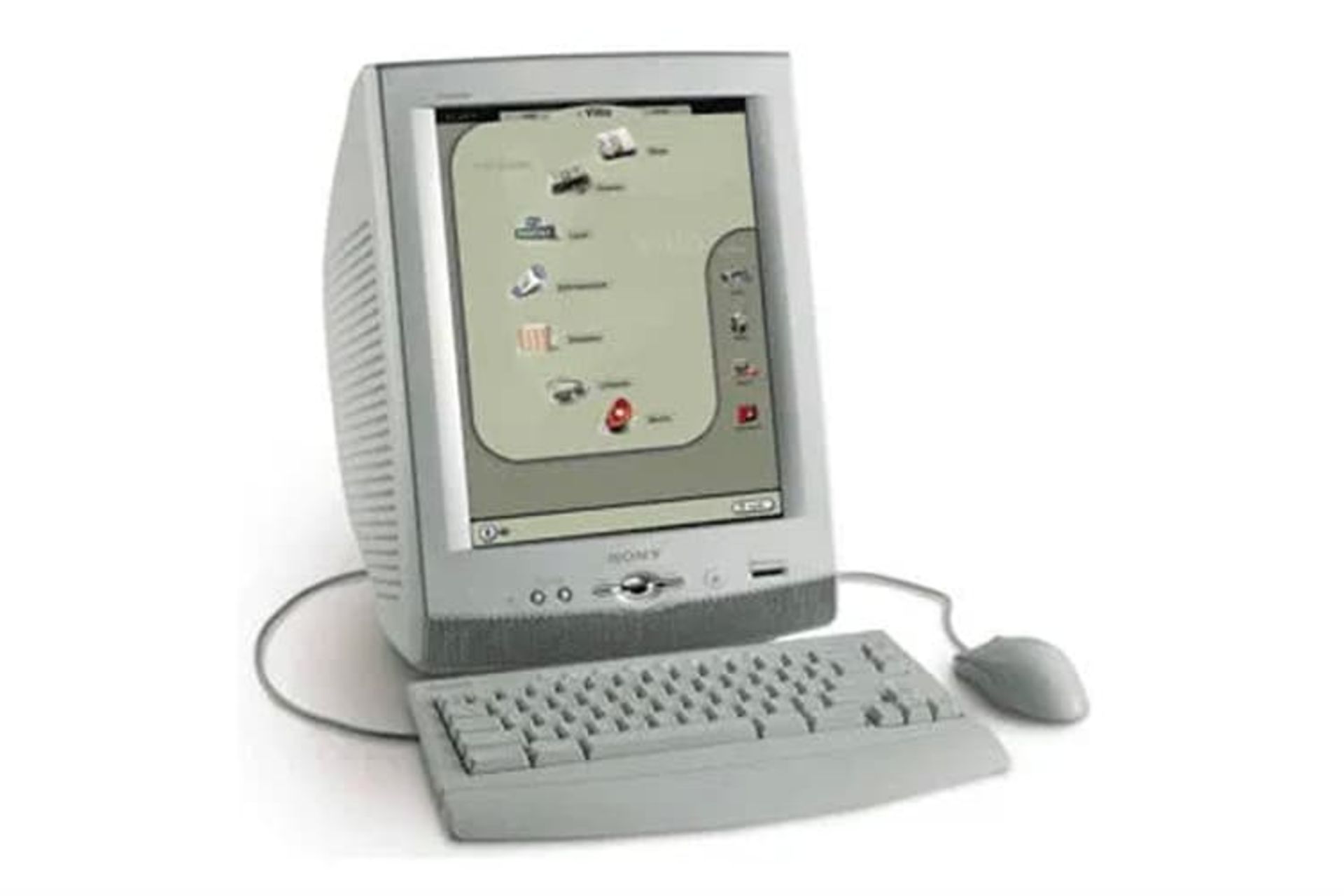
In 2001, many companies were offering Internet home appliances, including dedicated terminals for accessing the Internet and web browsers. Sony e-Villa was also a product that was launched with the same purpose.
The e-villa had a 15-inch monitor and a 56 kbps dial-up modem. e-Villa was designed to have access to email services and websites. At that time, there was a lot of competition between these devices and people preferred to use devices with Windows XP. As a result, Sony stopped the production of these products after three months.
Sony Airboard
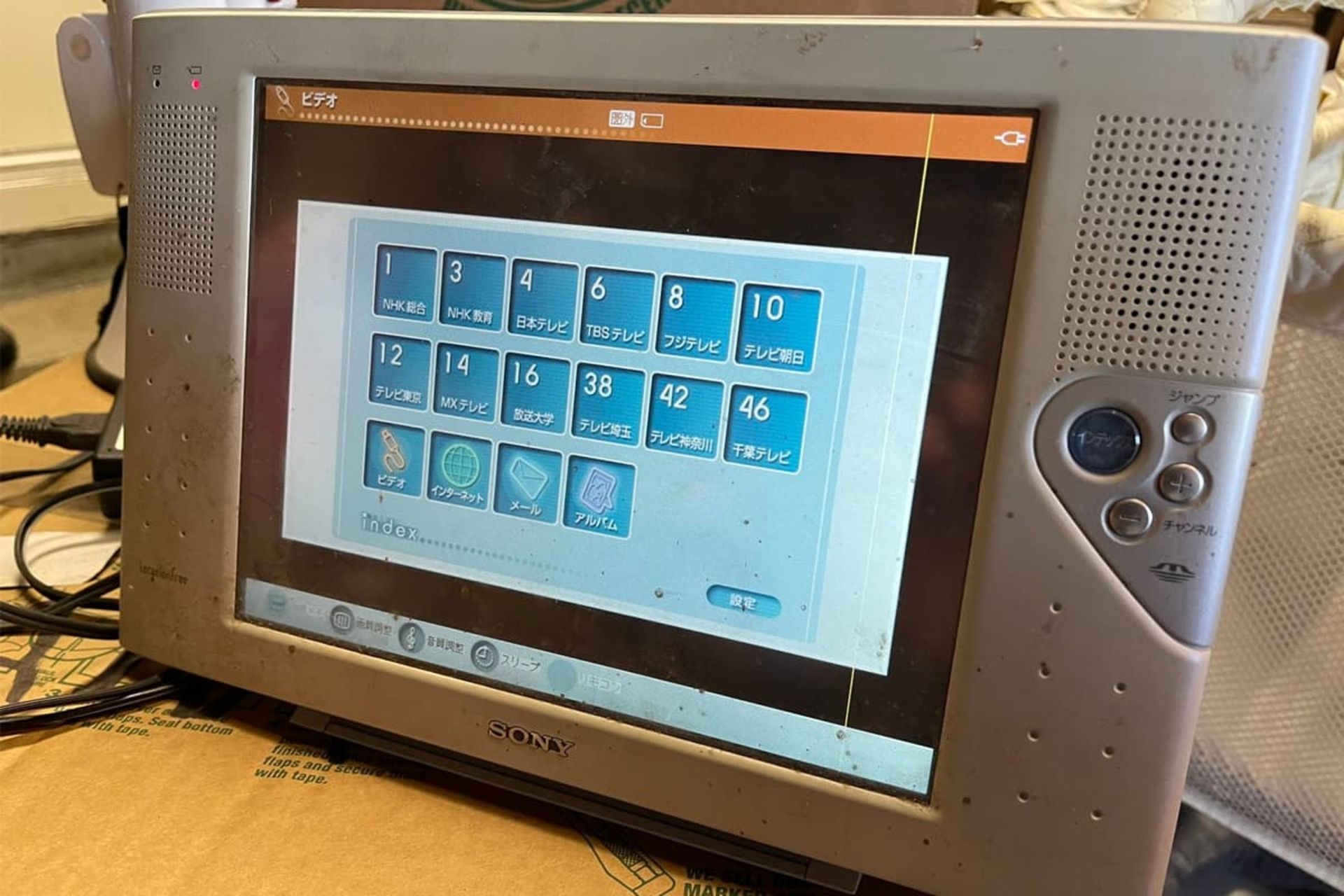
10 years before people became interested in watching videos on tablets, Sony launched a device called Airboard. The tablets of this family were 10 inches and had the possibility to connect to Wi-Fi and broadcast TV channels.
Using the picture-in-picture feature, users could search the Internet and watch TV. This device never caught on because people thought it was just a portable and expensive TV. Therefore, its production was stopped before entering the American market.
Sony PSX
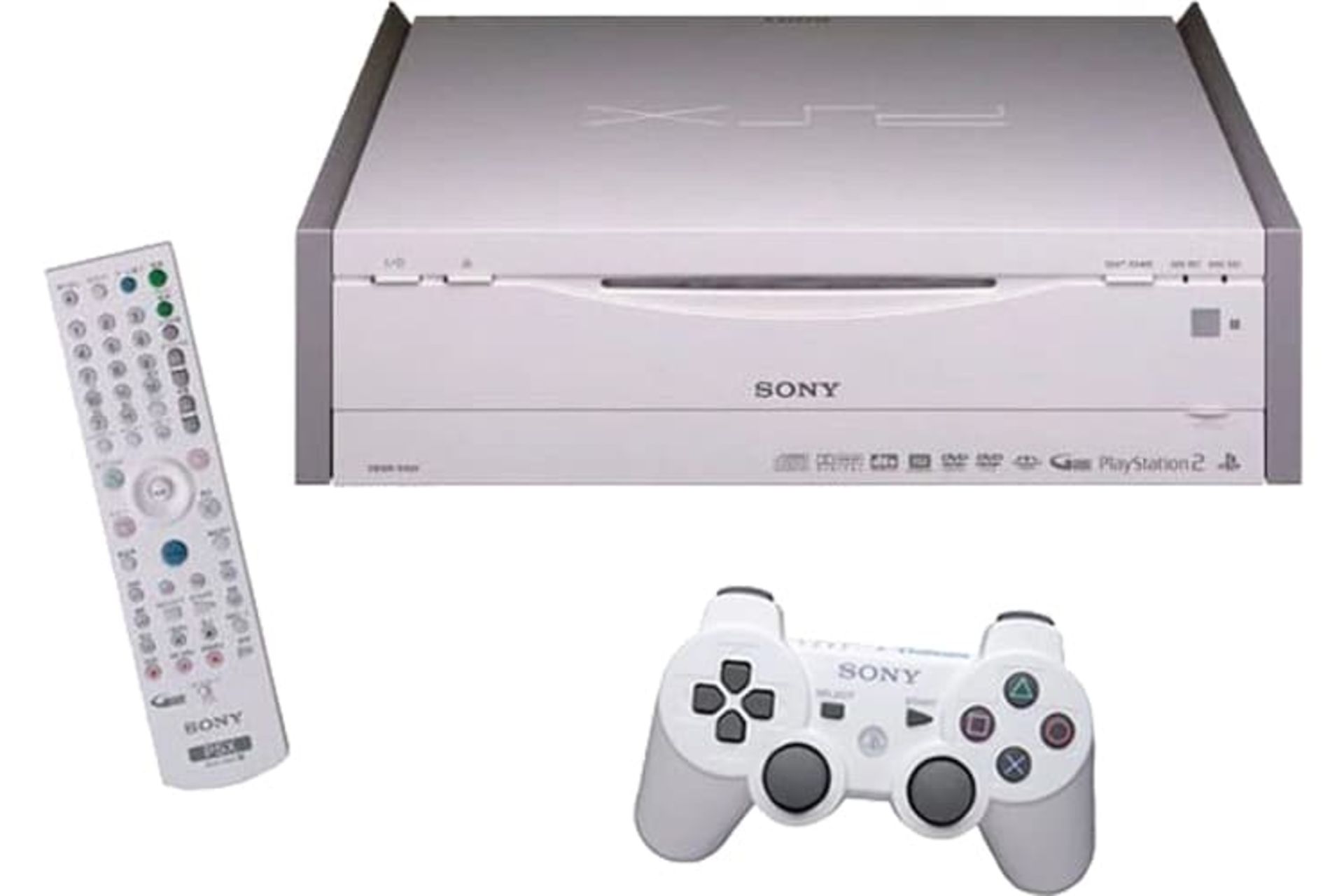
In 2003, Sony combined its two products, the PlayStation 2 and the video recorder, and marketed it as a single product. Using this product, customers could record the TV show on the storage memory or DVD at the same time as the game experience.
But the PSX, which was released only in Japan, was much larger and heavier than the PlayStation. Although this product did not have a high price, it could never attract many customers.
The current state of the Sony brand

Sony is one of the largest Japanese companies by revenue. The company reached the peak of profitability in the 1990s and 2000s due to the launch of its PlayStations, but faced financial problems in the late 2000s.
Read more: Samsung brand story; Full-view mirror of Korea’s commercial history
The global financial crisis, increased competition with PlayStation, and the earthquake in Japan in 2011 went hand in hand with Sony experiencing major failures for three years.
Due to the negative effects caused by natural disasters and exchange rates, the Times magazine called Sony a lack of flexibility and inability to measure the economy, but Sony was able to overcome all the crises in all these years by using innovation and became one of the top companies in the world. become in the television industry.
Sony’s current slogan is Be Moved, and the company aims to emotionally excite its customers with every product it offers.
Sony was able to pocket an operating profit of 1.21 trillion yen (about 8.9 billion dollars) in fiscal year 2022, which is a new record. Sony’s revenue in the final quarter of last year grew by 35 percent to about 3.06 trillion yen ($22.5 billion).


Adjective: The greatest; the best.
Pronoun: The greater part of a group, especially a group of people.
Noun: The greatest amount.
Noun: The greater part.
Noun: A record-setting amount.
How did the people of the past imagine the future?
How can you explain to people in the 1900s that a robot can sweep floors and carpets without any intervention by drawing a map of your house without sounding crazy?
To people of the last century, our technology today seems like magic; But that doesn’t mean they didn’t fantasize about what the future would be like. Many inventors and artists have depicted their own predictions of future technology. Let’s look at these paintings and then comment on their scope.
 Bird postman – 1892
Bird postman – 1892
The potential of human flight was one of the concerns of futurists. It is true that aviation has revolutionized our world, but the type of flying equipment and “flying cars” that captured the imagination a century ago will remain for the future.
One of the important innovations that the minds of the ancients often did not imagine is the Internet and modern wireless communications. In today’s world, the flying postman pictured here would probably be out of a job thanks to plain old email.
 Electric floor washer (electric scrubber) – 1899 | The vacuum cleaner was invented just two years after this image was made.
Electric floor washer (electric scrubber) – 1899 | The vacuum cleaner was invented just two years after this image was made.
The idea of a robot vacuum cleaner, now a reality in millions of homes, was apparently beyond imagination in the late 19th century.
 Machine learning-1901
Machine learning-1901
According to this prediction, teaching was supposed to become a very easy job by the year 2000. The principal simply feeds the history books into the machine, while an assistant (or perhaps a student being punished?) turns the handle and somehow wires the contents of the books to the headsets the students are wearing, and from there into their minds. sends Do you understand the necessity of the presence of the school principal in this process?
 Phone with photo – 1918
Phone with photo – 1918
The arrival of video-calling technology was predicted more than a century ago. The Electrical Experimenter magazine wrote in 1918: “Many inventors have attempted to invent a device or machine by which one person can see another while talking on the telephone.” According to the author of the magazine, such a device, which should naturally be called a “telephot”, will be invented sooner or later, because “everyone would like to have such a device.”
 Video call – 1942
Video call – 1942
Another article in the magazine Practical Electrics in 1942 predicted a similar device with moving pictures so interesting it is admirable.
 wheel of destruction
wheel of destruction
During World War I, specialized technology magazines were full of ideas that were hoped to bring an end to the long conflict. One of these inventions was the gyro-electric destroyer. “This 45-foot monster is steered by a large gyroscope wheel,” Electrical Experimenter magazine reported. “The destroyer travels at a speed of 40 to 60 miles per hour and because of its large diameter it easily rolls over trenches and other obstacles.”

The vision envisions a robot dog that readers can build for themselves; A wheeled device that operates with batteries and follows its owner’s metal cane through a magnet. It may have a cute face but don’t expect this dog to roll over, play, or react if something bad happens to you.
The idea of artificial pets doesn’t seem so strange nowadays. This is a concept that exists mostly in the field of cyberspace, exemplified by digital home assistants and artificial intelligence-based video game characters.
 Climate control – 1954
Climate control – 1954
The dramatic image above shows how future humans will be able to control the weather. This article describes an airplane that is dispatched to disperse a cloud that threatens to form a tornado. “In the age of the hydrogen bomb and supersonic flight, it’s possible that science will find ways not only to destroy tornadoes and hurricanes but also to influence weather conditions in ways that will boggle the imagination,” the magazine reports.
Read more: The future of generative artificial intelligence from its own language
 Food planning by computer – 1967
Food planning by computer – 1967
In 1967, Philco-Ford, a maker of electrical goods, produced a short film called 1999AD, showing how its future products might transform ordinary homes. The family in the film owns a space-age car, a large wall-filling television, and a large home computer that helps the family (specifically the mother) plan their meals. In the film, we see the father of the family using the computer to check the invoice for the clothes he bought online.


Do animals have an understanding of the concept of death?


What is Kali Linux? Everything you need to know about this popular but mysterious distribution


Sony Brand Story; From the production of rice cookers to becoming one of the most famous companies in the world


How did the people of the past imagine the future?


Mammoth and dodo return to nature


Canopus; What do we know about the second brightest star in the sky?


How to use iMessage on Android?


Can humans endure the psychological torment of living on Mars?


Xiaomi Glorimi M2 Max watch review; Alternative economic option for iPhone owners


Artificial intelligence problems; Frauds based on artificial intelligence and methods to deal with them
Popular
-



 Technology1 year ago
Technology1 year agoWho has checked our Whatsapp profile viewed my Whatsapp August 2023
-



 Technology1 year ago
Technology1 year agoSecond WhatsApp , how to install and download dual WhatsApp August 2023
-



 Technology1 year ago
Technology1 year agoHow to use ChatGPT on Android and iOS
-



 AI2 years ago
AI2 years agoUber replaces human drivers with robots
-



 Technology1 year ago
Technology1 year agoThe best Android tablets 2023, buying guide
-



 Technology1 year ago
Technology1 year agoThe best photography cameras 2023, buying guide and price
-



 Humans2 years ago
Humans2 years agoCell Rover analyzes the inside of cells without destroying them
-



 Technology1 year ago
Technology1 year agoHow to prevent automatic download of applications on Samsung phones

